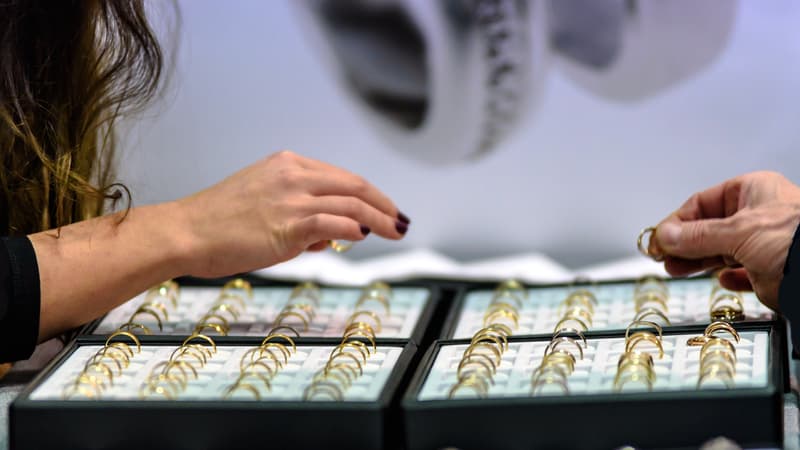“When we launched the business in 2013, the price of gold was half that. The increase was gradual but steady.” Margot Pavan, head of the Or du Monde jewellery store, highlights the difficult times in the sector: faced with the inflation of raw materials – which represents at least 20% of its costs – jewellers can do nothing but gradually raise prices.
“Everyone is wondering where it will go: a priori, we are not going to see any decline,” says Sandrine Marcot, CEO of the Union de la Bijouterie et Horlogerie (UBH). Gold has been breaking its own records for several weeks, reaching the symbolic mark of $2,500 per ounce (28 grams) at the end of August.
Among the reasons for the recent surge are geopolitical considerations: the People’s Bank of China (POBC) began compulsively buying bullion and coins to build up reserves. Following the announcement of Western sanctions against Russia, it bought almost 7.23 million ounces in 2023, its highest total in 46 years.
Inflation has also pushed consumers towards the ultimate safe haven.
A trade-off between prices and margins
Faced with this demand, jewellers must adapt. “They are turning their backs, but if this continues, it will be prices or margins,” warns Sandrine Marcot. For the moment, the sector is limiting its price increases, she says.
And for good reason: problems with purchasing power mean that the French have fewer resources for less essential purchases, such as jewellery. Craftsmen must therefore avoid raising their prices too much – excluding luxury brands, which have the means to pass on the costs – otherwise they could lose customers.
But on the other hand, it is difficult to avoid price increases. Their sources of supply are multiple: either they go through foundries to buy pure material; or they import jewellery from manufacturers outside Europe; or they turn to suppliers – such as Robbez-Masson, a leader in France – who manufacture in France after having traded the gold abroad.
But these three scenarios do not leave much room for negotiation. The wholesaler itself recently announced “a tense situation” and the retailers to whom it would have to pass on its own costs, according to BFM Business. The situation puts the “small” players at a disadvantage compared to the big players such as Leclerc (Le Manège à Bijoux – which did not want to speak) or Histoire d’Or, who import in large quantities and at lower prices.
Margot Pavan of Or du Monde uses a final channel: second-hand gold. “We recover gold from IT and dentistry and then refine it,” explains the jeweller, who places her practice on an ecological approach. She must adapt her purchase prices to remain competitive (gold is therefore increasingly expensive), but the model is a little less restrictive.
Less pure gold products
She also points out that her products, mainly wedding rings, are more resistant to price increases. “We don’t buy it every day: our clients want to pay for quality and, what’s more, for French workmanship.” Most buyers still prefer gold as an option for their wedding expenses.
However, the jewellery industry, like many others, wants to diversify. “Platinum has become more profitable than gold, many people are adopting it and we have launched silver rings to meet smaller budgets,” explains Margot Pavan. It also continues to use palladium, which is used in an alloy to make white gold.
Varying products, on the other hand, is a classic strategy, even if it means degrading the quality of the jewellery sold. Gold is never pure in jewellery because it is too soft. But it can actually be sold in jewellery stores in 750/1000, also called 18 carats (i.e. 75% pure), but also in 375/1000. The latter, popular with large jewellery chains, is already the most sold in volume. More and more craftsmen are using it.
Source: BFM TV


